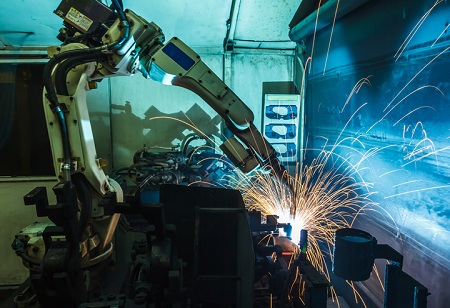 Magazine
Magazine

The integration of automation and robotics has brought about substantial advancements across various sectors, including manufacturing, warehousing, and healthcare. These technological breakthroughs have resulted in notable improvements in precision, productivity, safety measures, scalability, and the invaluable capability for real-time data collection and analysis. Assembly lines have undergone remarkable transformations, reducing human errors and boosting production speeds. Robotic devices capable of handling hazardous tasks have enhanced workplace safety and minimized risks to human workers. The ability to collect and analyze data instantly has empowered organizations to make more informed decisions and optimize their processes for unparalleled effectiveness.
Improved Precision and Quality
Automation and AI have facilitated precise measurements and quality standards across industries. This has translated into better products, more efficient processes, and improved outcomes. By analyzing data in real-time, businesses can promptly identify and rectify errors or issues, ensuring that the final product meets the highest levels of precision and quality. Automation reduces the margin of error in measurements and processes, resulting in fewer defects and rework. Robotics and automation ensure exact and repeatable solder connections and welds, thereby lowering faults and raising product quality. For example, in the automotive manufacturing industry, robotics and automation are used to precisely assemble components, such as engine parts or car body panels. By programming robots to perform these tasks with consistent accuracy, manufacturers can greatly reduce the risk of faulty connections or welds, leading to a higher-quality final product.
Enhanced Productivity
Beyond improved product quality, robotics and automation have significantly enhanced productivity in various industries. Robots operate tirelessly without the need for breaks or shifts, performing tasks at a much faster pace than humans. This increased speed and efficiency have led to higher output levels and reduced production times, allowing companies to meet customer demands more swiftly. Automation systems excel at multitasking, further elevating productivity and overall efficiency. For example, in the automotive industry, robotics and automation have revolutionized the assembly line process. Robots can perform repetitive tasks such as welding or painting with precision and consistency, resulting in higher-quality vehicles.
Safety Advancements
Automation systems and robots have ushered in safety advancements in the manufacturing industry. With automated machines, workers face reduced exposure to hazardous materials and dangerous tasks, thereby lowering the risk of accidents and injuries in the workplace. Furthermore, robots come equipped with sensors and safety features that detect potential hazards and halt operations to prevent accidents, ensuring a safer and healthier working environment for employees. For example, in the automotive industry, robots are used to handle heavy materials and perform repetitive tasks, such as welding or painting that can be dangerous for humans. This not only reduces the risk of physical injuries but also improves the overall quality and precision of the work being done. Automation systems can be programmed to carry out tasks in confined spaces or high-risk areas, such as handling toxic chemicals or working at extreme temperatures, keeping workers safe from exposure to these hazardous conditions.
Scalability and Flexibility
Automation and robotics offer scalability and flexibility in the workplace. These systems can be easily programmed and reprogrammed to handle different tasks and adapt to changing production needs. This flexibility enables businesses to efficiently scale their operations and meet increasing demand without the need for additional human labor. Moreover, automation systems seamlessly integrate with other technologies, creating a more flexible and interconnected production environment and further enhancing efficiency and productivity. For example, in a manufacturing setting, automation systems can be programmed to handle various tasks such as assembly, packaging, and quality control. If there is a sudden increase in demand for a particular product, the automation system can be quickly reprogrammed to prioritize the production of that item without any disruption to the overall workflow.
Data Collection and Analysis
Automation systems play a crucial role in data collection and analysis. Utilizing sensors and tracking technologies, these systems gather real-time data on various production metrics, including machine performance, product quality, and energy consumption. Subsequently, this data undergoes analysis to identify areas for improvement, optimize processes, and support data-driven decisions. The ability to collect and analyze data in real time equips manufacturers with valuable insights for continuous improvement and strategic decision-making. For example, in a manufacturing plant, sensors can be installed on machines to gather real-time data on their performance, such as speed, temperature, and efficiency. This data can then be analyzed to detect any anomalies or inefficiencies, enabling the plant manager to identify areas for improvement and enhance overall productivity.
Automation and robotics have transformed welding and soldering processes, improving precision, efficiency, safety, scalability, and data-driven decision-making. These technologies have enhanced product quality, productivity, and workplace safety while also reducing costs and increasing profitability. With automation and robotics, welding and soldering processes can be performed with greater accuracy and consistency, resulting in fewer defects and rework. Industry and paved the way for continuous improvement and innovation. And as industries continue to adopt these innovations, the future looks promising.
We use cookies to ensure you get the best experience on our website. Read more...